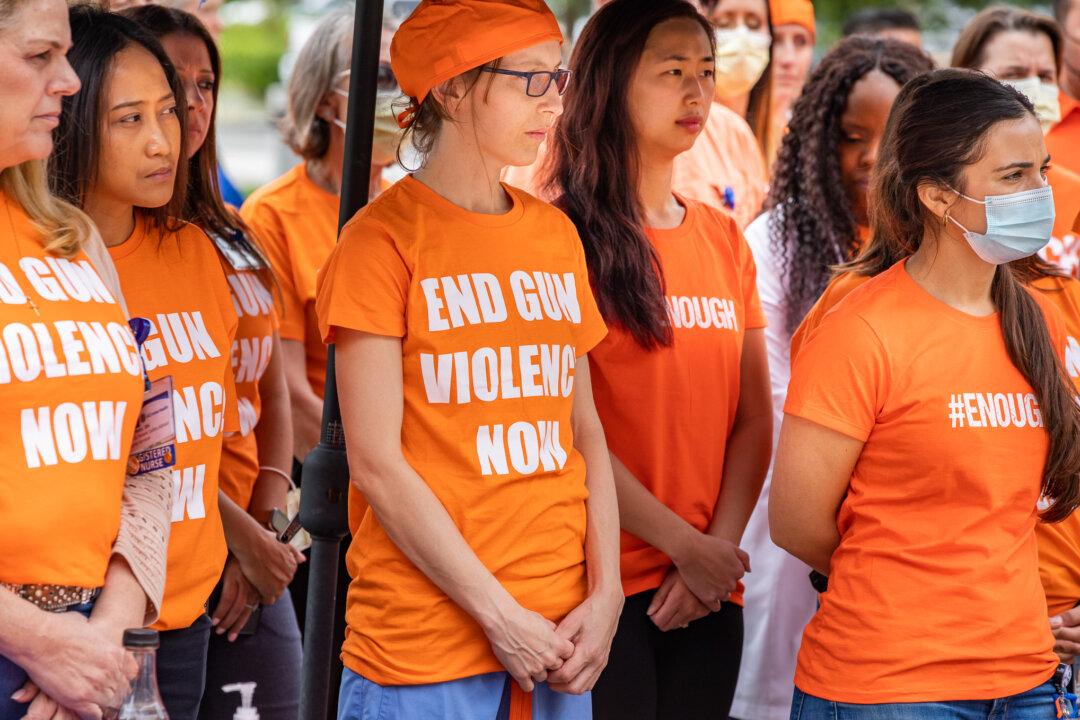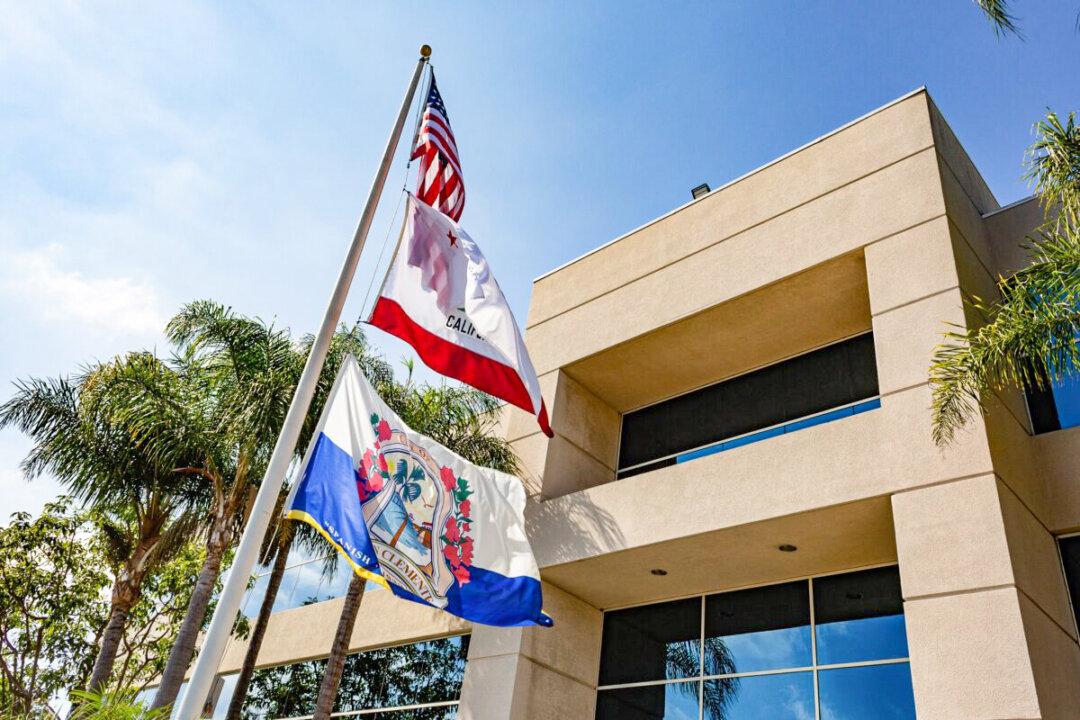ORANGE, Calif.—Days after a shooter took the lives of two physicians at a hospital in Oklahoma, doctors and hospital staff wearing orange T-shirts gathered outside the University of California–Irvine (UCI) Medical Center on June 3 to commemorate National Gun Violence Awareness Day.
“Today, we want to remember those that have been hurt or killed by gun violence,” Dr. Theresa Chin, a trauma surgeon from the medical center, told reporters. “But more importantly, we want to make moves to prevent further injury and deaths from gun violence.”





